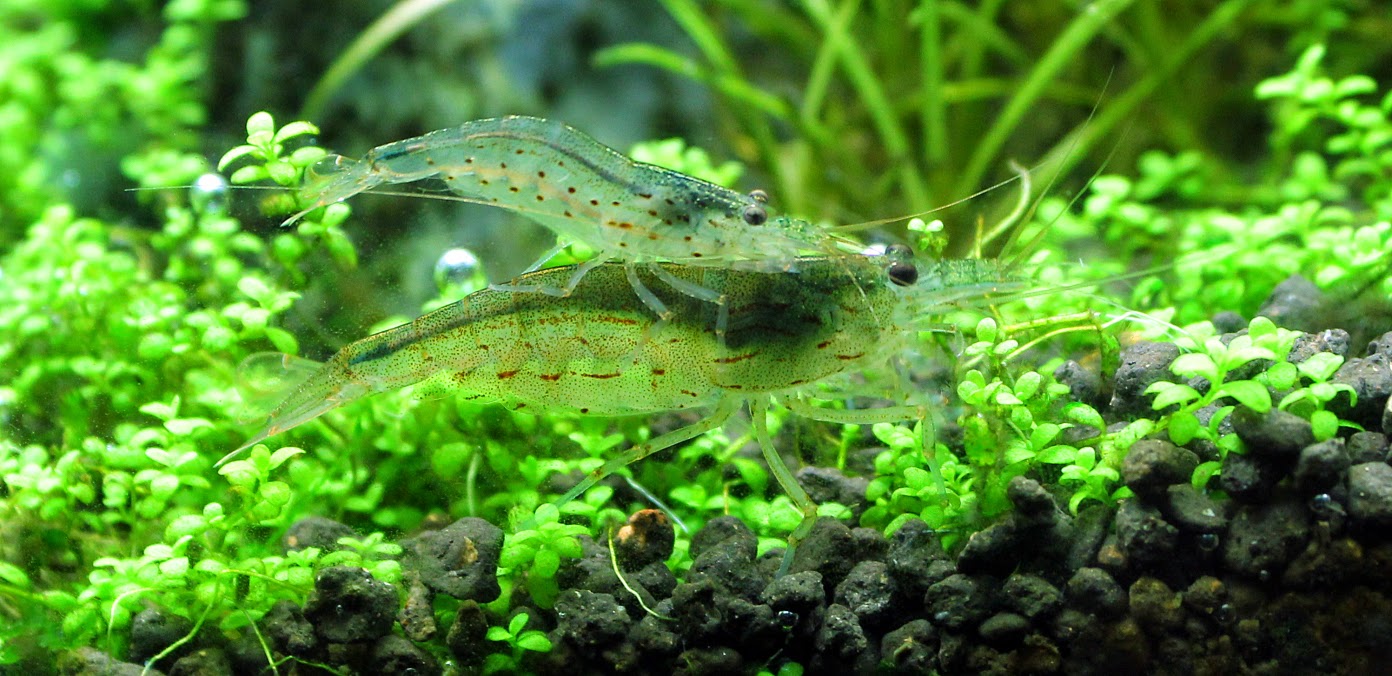Terdapat pelbagai jenis akuarium yang boleh dipilih dan dihasilkan mengikut cita rasa pemilik akuarium. Antaranya ialah:
1. Akuarium Air Tawar
 |
| Ikan emas mempunyai gaya renang yang mengasyikkan! |
Akuarium jenis ini paling mudah disediakan. Hal ini kerana pemilik tidak memerlukan kos yang banyak untuk memelihara ikan. Selain itu, pemilik mempunyai banyak pilihan hidupan peliharaan seperti ikan, udang, tumbuh-tumbuhan, amfibia, siput dan krustasia.
Ikan air tawar terdiri daripada 2 jenis, iaitu jenis tropika dan jenis bersuhu rendah seperti koi dan ikan emas. Oleh yang demikian, pemilik tidak boleh mencampur ikan jenis tropika dan bersuhu rendah dalam akuarium yang sama. Hal ini kerana keperluan suhu yang berbeza boleh menyebabkan jangka hayat ikan menjadi pendek dan perkembangan ikan terbantut. Lazimnya, ikan jenis tropika sesuai dengan suhu antara 24 hingga 27 darjah celcius manakala ikan jenis bersuhu rendah sesuai dengan suhu 20 darjah celcius dan ke bawah.
Dekorasi bagi akuarium air tawar boleh menggunakan pasir, batuan kerikil, batuan besar, kayu mati, tumbuhan hidup atau palsu, hiasan seramik dan plastik. Akuarium moden kini diperbuat daripada plastik, kaca lutsinar dan kaca akrilik.
2. Akuarium Marin
 |
| Reef Aquaria - mengandungi hidupan laut, terumbu karang, coral dan invertebrata |
Akuarium marin juga dikenali sebagai akuarium air masin atau air laut. Kos menyediakan akuarium jenis ini lebih mahal dan rumit pengendaliannya berbanding akuarium air tawar. Hal ini kerana peralatan yang digunakan lebih banyak dan kualiti air perlu dipantau dengan lebih ketat. Tambahan pula, hidupan air masin yang sukar diperolehi menjadikan faktor harganya lebih mahal. Walau bagaimanapun, hidupan air masin mempunyai kehebatan dan keunikan tersendiri lebih daripada hidupan air tawar.
 |
| FOWLR - mengandungi ikan air masin, batu karang hidup |
Pemilik air masin membahagikan akuarium jenis ini kepada 3 kategori, iaitu ikan semata-mata - fish only (FO), ikan dengan live rock - fish only with live rock (FOWLR) dan terumbu (reef aquaria).
 |
| FO - mengandungi ikan air masin dan replika batu karang/batu karang mati |
Untuk tangki FO, pemilik lebih cenderung menayangkan spesis ikan air masin yang besar dan agresif serta menggunakan penapisan mekanikal dan kimia. Berbeza pula dengan tangki FOWLR dan terumbu, live rock dijadikan sebagai penapisan biologi semulajadi bagi melindungi sisa nitrogen bermanfaat metabolisme bakteria.
3. Akuarium Air Payau (brackish-water)
 | ||
| Aligator Gar merupakan ikan air payau |
4. Akuarium Komuniti (pelbagai spesis)
 | ||
| Akuarium komuniti breckish-water seperti Archer fish, fire eel |
Akuarium jenis ini mempunyai lebih dari satu spesis. Ikan-ikan yang dimasukkan dalam akuarium mestilah mempunyai persamaan dari segi perangai dan keperluan air. Contohnya, kebanyakan ikan air tawar hidup dengan pH air antara 6 - 8. Kelebihan daripada akuarium jenis ini menawarkan kepelbagaian warna dan tingkah laku ikan yang mampu menarik minat dan menghiburkan pemilik akuarium.
 |
| Akuarium komuniti air tawar seperti Discus, Penguin Tetra |
 |
| Akuarium komuniti Cichlids |
Jadi, peminat ikan air masin boleh mencampurkan pelbagai spesis hidupan air masin dari Laut Merah, Lautan Pasifik dan Caribbean tanpa sebarang masalah. Begitu juga dengan peminat ikan Cichlids, boleh mencampurkan spesis dari Tasik Malawi dan Tasik Tanganyika.
 |
| Akuarium komuniti monster fish - besar dan agresif! |
Selain itu, terdapat beberapa spesis ikan air tawar dan air masin boleh bercampur dengan ikan air payau. Walau bagaimanapun, ikan air tawar sudah pasti tidak boleh bercampur dengan ikan air masin.
Syarat utama bagi sesebuah akuarium komuniti ialah persamaan perangai dan keperluan air ikan. Ciri-ciri ikan yang tidak boleh dimasukkan dalam akuarium komuniti ialah terlalu agresif (piranha), mempunyai kawasan/wilayah tersendiri (cichlid), jenis pemangsa (gar), bersaiz besar dan aktif (catfish), jenis ikan penakut dan pemalu (discus) serta mempunyai cara pemakanan tersendiri dan perlahan (pipefishes).
5. Akuarium Biotope
 |
| Susunan kayu mati, pemilihan warna pasir dan pencahayaan yang sesuai umpama di dalam Sungai Amazon |
Istilah biotope selalunya sinonim dengan perkataan habitat. Jenis akuarium ini disediakan bagi menyerupai sama seperti persekitaran hidupan tersebut. Contohnya, Discus yang berasal dari Sungai Amazon.
Faktor persekitaran seperti air, tanah dan ciri-ciri geografi Discus diadaptasi dalam susun atur akuarium tersebut. Selain itu, penambahan tumbuh-tumbuhan sebenar dari lokasi asal dan pencahayaan yang sesuai mampu menggambarkan suasana sebenar Discus di Amerika Selatan.






